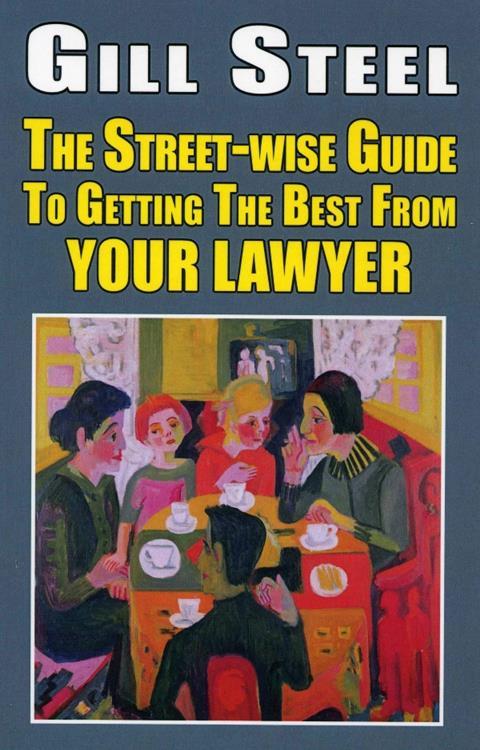Kate Mahon reviews the latest release by Gill Steel on how the public can get the best from their lawyer
I was keen to review this book, as I was intrigued as to what advice Gill Steel would be imparting to the lay client. I must admit I was a tiny bit sceptical about it. But Steel is a solicitor with over 30 years’ experience in private client matters and, having attended a number of her courses in the past, I know at first-hand just how knowledgeable she is. I wanted to read what she had to say on this subject, as there really doesn’t seem to be anything else like it on the market, as far as I’m aware.

The Street-Wise Guide to Getting the Best from Your Lawyer
Gill Steel
Edward Everett Root, 1st edition, October 2018
£19.99
ISBN 9781912224623
The book mainly focuses on conveyancing, private client (including tax planning) and family law. Given Steel’s background and expertise, I can understand this; however, for someone looking to get the best out of their litigation lawyer, for example, the advice might be very different. Perhaps a separate publication is needed for more contentious areas of law.
The book starts with an extremely useful guide to jargon, something I think many lawyers fail to give to their clients, but which can be invaluable in building their understanding of what we are doing for them and deciphering some of our correspondence and documents. Many of the chapters in the book also end with a useful checklist, which will certainly help clients to be more prepared when instructing a lawyer.
My only concern is how this book will reach the people who need it
The first chapter covers conveyancing. Steel is particularly good in highlighting how chains can break down, and largely out of the lawyer’s and the client’s control. It explains the reasons for delays in the process and how clients can improve their experience. Steel covers the issue of co-ownership very well, which is often very confusing for the lay client. There are helpful flowcharts, which could help conveyancers explain the process to their clients and, more importantly, manage their expectations. It is clear from this chapter that Steel feels the conveyancing system is outdated and not fit for purpose; she goes some way to highlight lawyers’ frustrations with the current system.
Steel covers several other areas for the lay person, including family matters, making a will, managing someone’s finances, administering an estate after death, mitigating tax, succession planning for your business, family trusts, and costs of care.
There is also a good overview of how the law is made, the different types of lawyers in the English legal system, and the regulatory framework.
The chapter on family trusts is an excellent overview of what trusts are, their uses, and the different types of trust you can create. Trusts are a particularly difficult concept for lay clients to understand, but Steel explains the concepts in client-friendly language, and uses excellent practical examples.
A chapter I found particularly useful is the one on the costs of care, which is and will become an increasingly topical issue. Many of my clients could do with reading it. Steel includes deliberate deprivation of assets and the use of asset protection trusts. This is all covered extremely well for the lay person.
I was pleased that Steel dedicates a whole chapter to pricing, as with the introduction of the mandatory requirement for law firms to publish their prices for non-contentious probate matters (amongst other services), transparency in pricing is an important live issue for lawyers. The chapter highlights the myriad different pricing structures and the lack of certainty for the lay client in just how much their legal service will cost. Although this chapter goes some way to explain the different pricing concepts, I am not sure it will provide much clarity for the lay client. Steel makes some points that I simply do not agree with and which appear to be sweeping generalisations (for example, “A well organised firm will … have effective financial management by employing an experienced accountant as its chief executive”).
With a new era of regulation almost upon us, including the introduction of freelance solicitors and the plethora of unregulated services providing probate services and will-writing services, Steel is keen to point out the importance of the public using a regulated provider for their legal services. I commend her for this.
I believe all practising lawyers would benefit from reading this book and could certainly use some of the information within it to facilitate their client relationships. My only concern is how this book will reach the people who need it – that is, those that need or are searching for legal services. With a £19.99 price tag, I wonder if it may be a bit on the expensive side for many members of the public.





